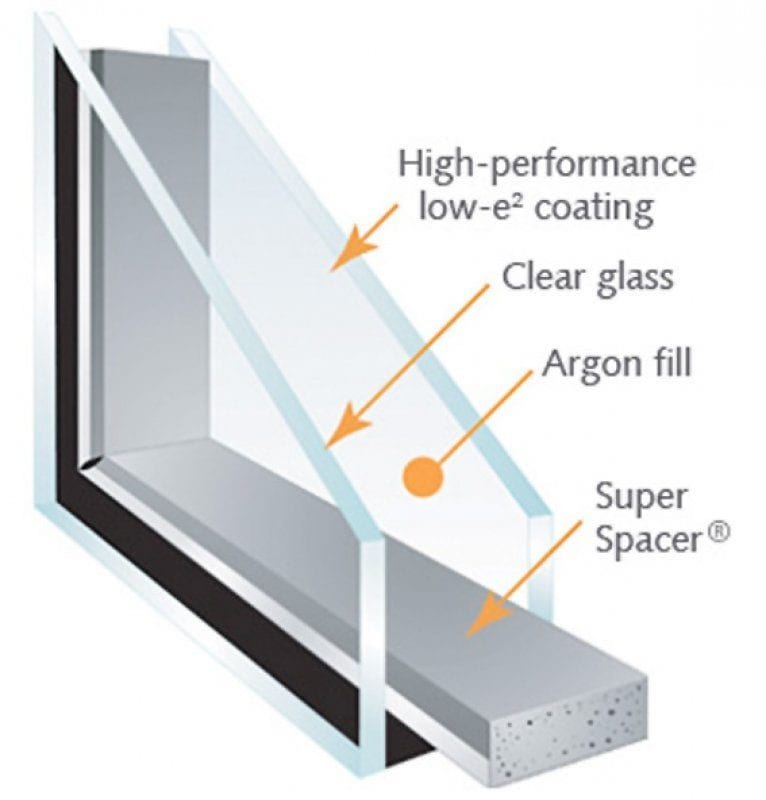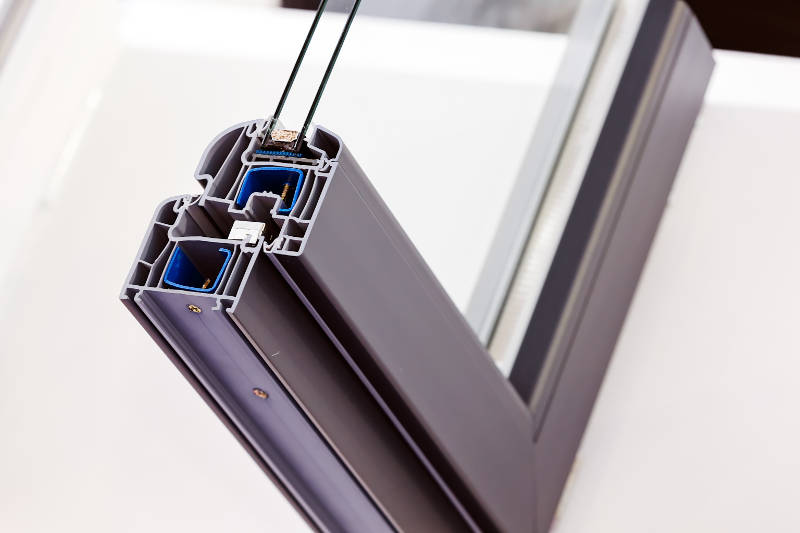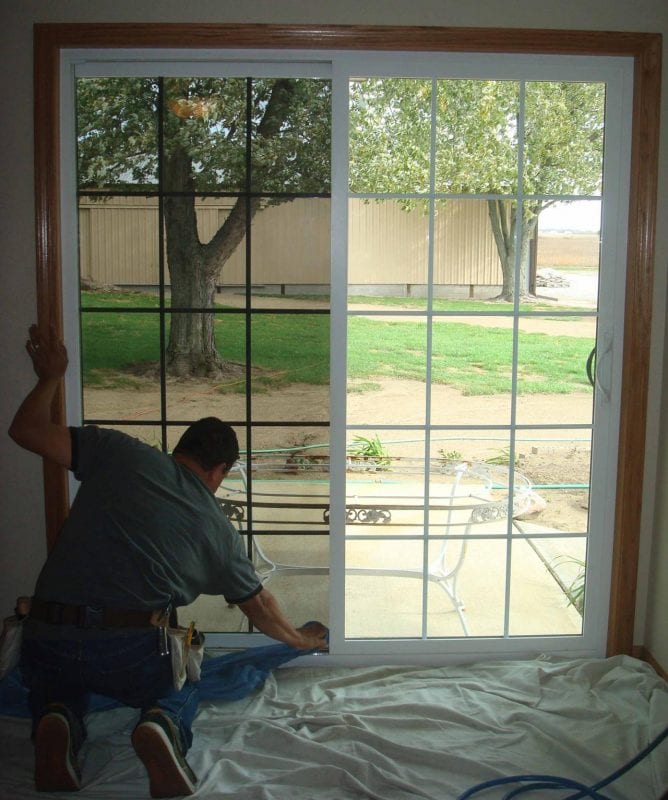Go Green DIY’s professional Team will provide you with more information about the windows and doors and how they can save you money through out a year.
Types of Window Glazing or Glass
In addition to choosing a frame type, you will need to consider what type of glazing or glass you should use to improve your home’s energy efficiency. Based on various window design factors such as window orientation, climate, building design, etc., you may even want to choose different types of glazing for different windows throughout your home.

Gas Fills
To improve the thermal performance of windows with insulated glazing, some manufacturers fill the space between the panes with inert gas — commonly argon or krypton — that has a higher resistance to heat flow than air.

Insulated Glass
Insulated window glazing refers to windows with two or more panes of glass. To insulate the window, the glass panes are spaced apart and hermetically sealed, leaving an insulating air space. Insulated window glazing primarily lowers the U-factor, but it also lowers the SHGC.

Heat-Absorbing Tints And Absorbant Coatings
Heat-absorbing window glazing contains special tints that change the color of the glass. Tinted glass absorbs a large fraction of the incoming solar radiation through a window, reducing the solar heat gain coefficient (SHGC), visible transmittance (VT), and glare.
Some heat, however, continues to pass through tinted windows by conduction and re-radiation, so the tint doesn’t lower a window’s U-factor. Inner layers of clear glass or spectrally selective coatings can be applied on insulated glazing to help reduce these types of heat transfer.
Low-Emissivity Coatings
Low-emissivity (low-e) coatings on glazing or glass control heat transfer through windows with insulated glazing. Windows manufactured with low-e coatings typically cost about 10% to 15% more than regular windows, but they reduce energy loss by as much as 30% to 50%.
A low-e coating is a microscopically thin, virtually invisible, metal or metallic oxide layer deposited directly on the surface of one or more of the panes of glass. The low-e coating lowers the U-factor of the window, and different types of low-e coatings have been designed to allow for high solar gain, moderate solar gain, or low solar gain. A low-e coating can also reduce a window’s VT unless you use one that’s spectrally selective.
Although low-e coatings are usually applied during manufacturing, some are available for do-it-yourselfers. These films are inexpensive compared to total window replacements, last 10 to 15 years without peeling, save energy, reduce fabric fading, and increase comfort.
Reflective Coatings
Reflective coatings on window glazing or glass reduce the transmission of solar radiation, blocking more light than heat. Therefore, they greatly reduce a window’s VT and glare, but they also reduce a window’s SHGC. Reflective coatings usually consist of thin, metallic layers, and come in a variety of colors, including silver, gold, and bronze. Reflective window glazing is commonly used in hot climates to control solar heat gain. The reduced cooling energy demands can be offset by the need for additional electrical lighting, so reflective glass is used mostly for special applications.
Spectrally Selective Coatings
A special type of low-e coating is spectrally selective, filtering out 40% to 70% of the heat normally transmitted through insulated window glass or glazing while allowing the full amount of light transmission. Spectrally selective coatings are optically designed to reflect particular wavelengths, but remain transparent to others. Such coatings are commonly used to reflect the infrared (heat) portion of the solar spectrum while admitting more visible light. They help create a window with a low U-factor and SHGC but a high VT.
Spectrally selective coatings can be applied on various types of tinted glass to produce “customized” glazing systems capable of either increasing or decreasing solar gains according to the aesthetic and climatic effects desired. Computer simulations have shown that advanced window glazing with spectrally selective coatings can reduce the electric space cooling requirements of new homes in hot climates by more than 40%.
